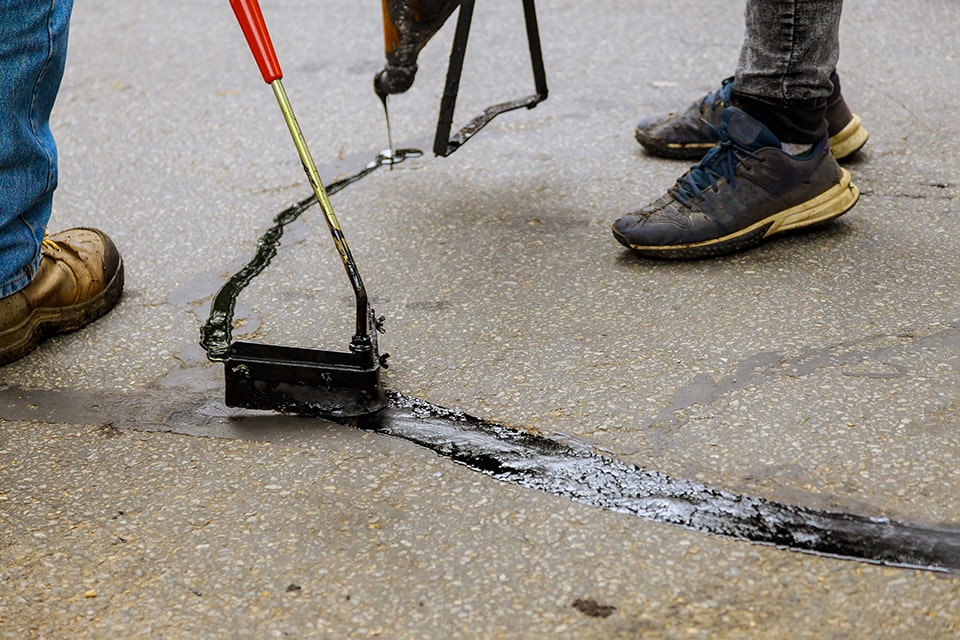Pavement failures manifest in many forms—cracks, ruts, potholes, depressions—and each signals specific structural, material or environmental issues. Identifying the root cause of the distress is the key to selecting the correct repair strategy and preventing recurrent damage. This article details the most common asphalt pavement failures and provides best-practice remediation techniques to restore durability and performance.
1. Alligator Cracking
Cause: Repeated traffic loads combined with weak or insufficient base or sub-grade structure leads to interconnected cracks resembling an alligator’s skin.
Remedy: This is a structural failure, so a full-depth patch or reconstruction is typically required. Milling and overlay alone will not suffice if the base has failed.
2. Block Cracking
Cause: Load-independent cracking caused by shrinkage of the asphalt layer, aging binder, thermal cycles or inadequate mix design. Often occurs where traffic load is moderate but binder flexibility or aggregate choice is poor.
Remedy: For cracks under ~½ inch, crack sealing may delay deterioration. For more advanced cases, remove the affected layer and apply a new overlay.
3. Longitudinal & Transverse Cracking
Cause (Longitudinal): Cracks parallel to the centreline or laydown direction, often due to poor joint construction, reflective cracking, fatigue or weak layers.
Cause (Transverse): Cracks perpendicular to the pavement direction caused by temperature‐induced contraction, reflective joints, or improper construction.
Remedy: If crack width is small (< ½ inch) and condition is stable, crack sealing may suffice. If the crack network is extensive or the substructure is compromised, overlay or reconstruction is needed.
4. Edge Cracking
Cause: Cracks forming within one to two feet of the pavement edge due to poor drainage, inadequate edge support, or settlement of base material under heavy traffic or vegetation intrusion.
Remedy: First correct drainage and remove vegetation. Then apply crack sealing or full‐depth repair depending on severity and support conditions.
5. Joint Reflection Cracking
Cause: Occurs when flexible asphalt overlays rigid pavement (e.g., asphalt over concrete) and cracks reflect through from the underlying joints. Poor bonding, thermal movement or traffic loads worsen the condition.
Remedy: Crack sealing can delay moisture infiltration for minor cases. For serious failures, remediate by removing and replacing the overlay or installing interlayer systems before resurfacing.
6. Potholes
Cause: Usually culminates from untreated cracking, water infiltration, freeze-thaw cycles and weakened supporting structure. A surface chunk breaks out and a bowl‐shaped depression forms. +1
Remedy: Full-depth patching—remove failed materials down to sound base, replace with suitable aggregate and asphalt, compact properly to restore structural integrity. +1
7. Rutting
Cause: Channelized depressions in wheel paths due to consolidation or lateral movement of any pavement layer, subgrade failure, insufficient thickness, or poor compaction. +1
Remedy: For minor rutting, fill and overlay may suffice. For significant deformation, remove the affected section, reinforce or rebuild the base, then apply a new asphalt layer.
8. Depressions (Birdbaths)
Cause: Localized sagging in the pavement surface due to subgrade settlement, poor compaction or moisture intrusion beneath the surface. Water often ponds in these depressions.
Remedy: Depending on severity, either thin surface patching or full removal and replacement of the depressed area with proper base and asphalt. +1
9. Raveling
Cause: Progressive loss of aggregate or binder from the surface downward or edges inward, often due to aging asphalt, traffic abrasion, inadequate compaction, or placement during cold weather.
Remedy: Apply a hot-mix overlay or treatment such as chip seal, slurry seal or micro-surfacing to protect remaining pavement and improve surface condition.
Prevention: Key Practices
- Routine inspection and maintenance to detect early distress before structural damage sets in.
- Water management and drainage: Ensuring pavement edges and base layers stay dry prevents many forms of failure.
- Timely sealcoating and crack sealing to protect the surface binder and prevent moisture ingress.
- Proper design and construction: Ensuring appropriate thickness, adequate base, correct mix design and compaction clearly reduce risk of structural failures.
Conclusion
Understanding the underlying causes of pavement failures enables targeted, effective repairs that restore structural performance and extend service life. From crack sealing and patching to full-depth reconstruction, selecting the right solution for the defect type is critical. At AMR New York, we specialise in identifying pavement distress and implementing the appropriate remediation to ensure durable, cost-effective results.
For expert evaluation and repair of your asphalt surfaces in New York, contact AMR New York today for a consultation.
Read more:
Types Of Heated Driveways: Which System Is Best For Your Home?
